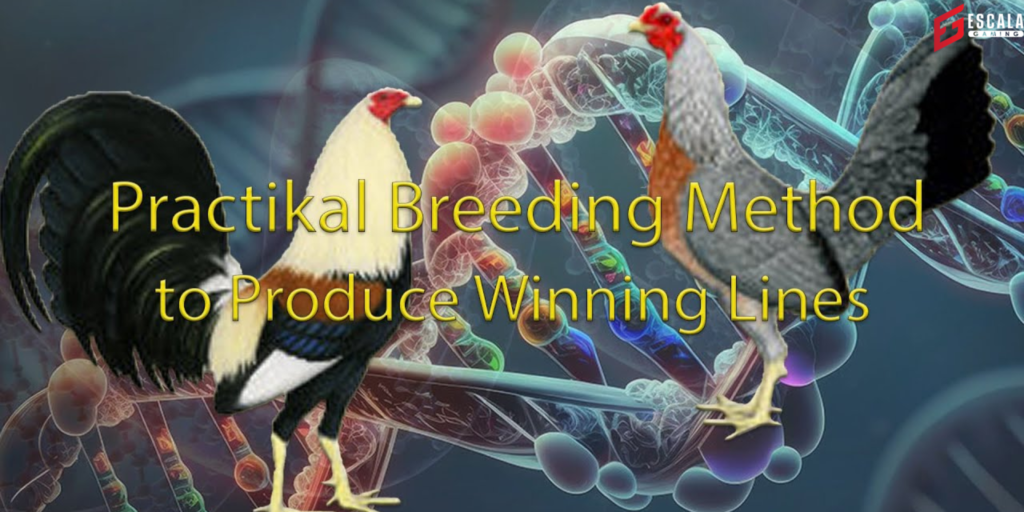Welcome to the dynamic world of competitive rooster breeding! If you’re fascinated by the vibrant spectacle of rooster competitions, you’ve probably wondered about the secrets behind the Breeding Techniques of these feathered champions.
Today, it’s not just about traditional methods; innovative breeding techniques are setting new standards. In this deep dive, we’ll explore how selective breeding, genetic testing, and modern technology are revolutionizing the way competitive roosters are bred. So, let’s embark on this fascinating journey together!
Table of Contents
Section 1: The Art of Selective Breeding Techniques
Have you ever noticed how some roosters stand out in the arena with their exceptional strength, agility, or even their unique plumage? That’s often the result of selective breeding, a method that has been a game-changer in the world of competitive rooster breeding.
What is Selective Breeding?
Selective breeding is like putting together a dream team. Breeders pick the best roosters and hens based on certain qualities they want to see in their offspring. Think of it like a coach selecting the top players for a team, aiming for a winning combination.
Identifying Desirable Traits
The first step in selective Breeding Techniques is knowing what to look for. In competitive roosters, breeders often seek traits like strength, speed, and endurance. But it’s not just about physical prowess. Health, temperament, and even the rooster’s appearance can play a significant role.

Imagine you’re a breeder. You have a rooster that’s incredibly fast and another that’s known for its endurance. By carefully choosing which birds to mate, you aim to produce offspring that inherit the best qualities from both parents.
The Breeder’s Toolbox: Observation and Record-Keeping
Successful selective Breeding Techniques rely heavily on keen observation and meticulous record-keeping. Breeders become detectives of sorts, closely watching their flocks and noting each bird’s characteristics. They maintain detailed records of lineages, health, performance, and even behavioral traits. This information is crucial for making informed decisions about future breeding pairs.
Challenges and Ethical Considerations
Selective Breeding Techniques isn’t without its challenges. It requires patience, skill, and a deep understanding of genetics. There’s also the responsibility to breed responsibly. Ethical breeders prioritize the health and welfare of their roosters, avoiding practices that could harm them or lead to long-term health problems.

Section 2: Genetic Testing and Its Impact
Moving beyond selective breeding techniques, we enter the realm of genetic testing – a game-changer in rooster breeding. But what exactly is genetic testing? It’s like a scientific deep dive into a rooster’s DNA, unlocking secrets about its health, potential, and even its lineage.
The Role of Genetic Testing
Genetic testing allows breeders to identify specific genetic markers linked to desirable traits. This knowledge is powerful. It means breeders can make more precise decisions, ensuring that only the best traits are passed on to the next generation. It’s not just about picking the strongest rooster anymore; it’s about knowing exactly what makes it strong.
Ethical Considerations and Challenges
However, with great power comes great responsibility. Genetic testing raises important ethical questions. How far should we go in manipulating the genetics of these animals? The key is to use this technology responsibly, ensuring that the welfare of the roosters always comes first.
Section 3: Technology in Rooster Breeding
Today’s breeders aren’t just relying on their eyes and experience; they’re also turning to technology. One breeding techniques is utilizing computerized tracking systems to artificial intelligence, technology is reshaping how we breed competitive roosters.
Innovations in Technology
Picture a world where technology seamlessly integrates into the daily life of a rooster breeder. Advanced systems track a rooster’s vital signs, providing real-time health updates. These systems can detect even the slightest change in behavior or health, allowing breeders to intervene promptly, ensuring the wellbeing of their flocks. Artificial Intelligence (AI) plays a pivotal role too.
AI algorithms analyze vast amounts of data, from genetic information to past performance records, helping breeders make informed decisions about which roosters to pair for breeding. This technology doesn’t just predict outcomes; it revolutionizes the Breeding Techniques process, making it more precise and targeted. It’s a leap forward, transforming traditional practices with digital sophistication.
Improving Breeding Techniques Efficiency
In the realm of competitive rooster breeding, time and accuracy are of the essence. The technological revolution in this field has drastically cut down the time needed to achieve desired Breeding Techniques outcomes. Breeders, equipped with advanced tools and software, can now track the lineage and genetic qualities of their roosters with unprecedented ease. This efficiency isn’t just about speed; it’s about precision.
With technology, breeders can identify the most promising roosters and hens, ensuring that each breeding decision contributes to the overall quality and health of the flock. This approach significantly reduces trial and error, leading to healthier, stronger roosters. In essence, technology in rooster breeding is a catalyst for progress, enabling breeders to achieve in a few years what used to take decades, all while prioritizing the health and welfare of the animals.
Section 4: Balancing Tradition and Innovation
As we embrace these innovative breeding techniques, it’s important to remember the roots of rooster breeding. Traditional knowledge and instincts are invaluable, and when combined with modern methods, they create a powerful toolkit for breeders.
Section 5: Future Trends in Rooster Breeding
Looking ahead, the future of rooster breeding is bright and full of potential. We can expect more breakthroughs in genetics, more advanced technologies, and perhaps most importantly, a deeper understanding of how to breed roosters ethically and responsibly.
Conclusion
From selective breeding to genetic testing and technological advancements, the world of competitive rooster breeding is evolving rapidly. While these innovative bredding
techniques offer exciting possibilities, they also come with a responsibility to ensure the health and welfare of these magnificent birds.
As breeders, enthusiasts, or simply curious readers, we must always strive for a balance between ambition and ethical practice. Let’s step into the future of rooster breeding with respect, care, and a commitment to excellence.

FAQs on Innovative Breeding Techniques for Competitive Roosters
What is selective breeding in rooster breeding?
- Selective breeding involves choosing roosters and hens with desirable traits, like strength or agility, and breeding them to produce offspring with these qualities.
How important is genetic testing in rooster breeding?
- Genetic testing is increasingly important as it helps breeders identify specific genetic traits and potential health issues, allowing for more informed breeding decisions.
Can technology really improve rooster breeding?
- Absolutely! Technology like digital monitoring systems and artificial intelligence can track the health and performance of roosters, leading to more efficient and effective breeding.
Is selective breeding ethical?
- Selective breeding can be ethical when done responsibly. It’s important to prioritize the health and welfare of the roosters, avoiding practices that may cause harm.
What are the biggest challenges in modern rooster breeding?
- Challenges include balancing traditional knowledge with modern techniques, ensuring genetic diversity, and maintaining ethical standards in breeding practices.
How does selective breeding affect the health of roosters?
- When done responsibly, selective breeding can improve the overall health and vigor of roosters. However, irresponsible breeding practices can lead to health issues.
Can anyone start breeding competitive roosters?
- While anyone can start, successful breeding requires knowledge, skill, and a commitment to ethical practices. It’s not just about winning competitions, but also about caring for the animals.
How long does it take to see results from selective breeding?
- Results can vary. Some traits may be seen in the first generation, while others might take several generations to manifest.
Are there legal regulations for breeding competitive roosters?
- Yes, there are regulations, especially concerning animal welfare. It’s crucial to be aware of and comply with local and national laws.
How can I learn more about breeding techniques for competitive roosters?
- You can learn more through books, online resources, breeding courses, and by connecting with experienced breeders and industry experts.
You can read our Sabong related articles :
- Mastering White Kelso Training: Expert Tips And Insights
- E-Sabong’s Digital Roost: How Cryptocurrency Is Flocking To The Cockfighting Arena
- An Idea On How To Embrace Tradition In Cultural Exchange Programs Focused On Sabong Talpak
- Sabong Tourism: Insider’s Guide To Sabong For Overseas Visitors In The Philippines


